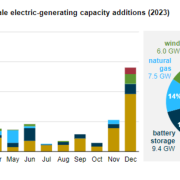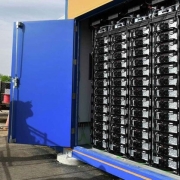Developers plan to add 54.5 gigawatts (GW) of new utility-scale electric-generating capacity to the U.S. power grid in 2023, according to our Preliminary Monthly Electric Generator Inventory. More than half of this capacity will be solar power (54%), followed by battery storage (17%).
Solar. U.S. utility-scale solar capacity has been rising rapidly since 2010. Despite its upward trend over the past decade, additions of utility-scale solar capacity declined by 23% in 2022 compared with 2021. This drop in solar capacity additions was the result of supply chain disruptions and other pandemic-related challenges. We expect that some of those delayed 2022 projects will begin operating in 2023, when developers plan to install 29.1 GW of solar power in the United States. If all of this capacity comes online as planned, 2023 will have the most new utility-scale solar capacity added in a single year, more than doubling the current record (13.4 GW in 2021).
In 2023, the most new solar capacity, by far, will be in Texas (7.7 GW) and California (4.2 GW), together accounting for 41% of planned new solar capacity.
Click here to read the full article
Source: EIA
—
If you have any questions or thoughts about the topic, feel free to contact us here or leave a comment below.


